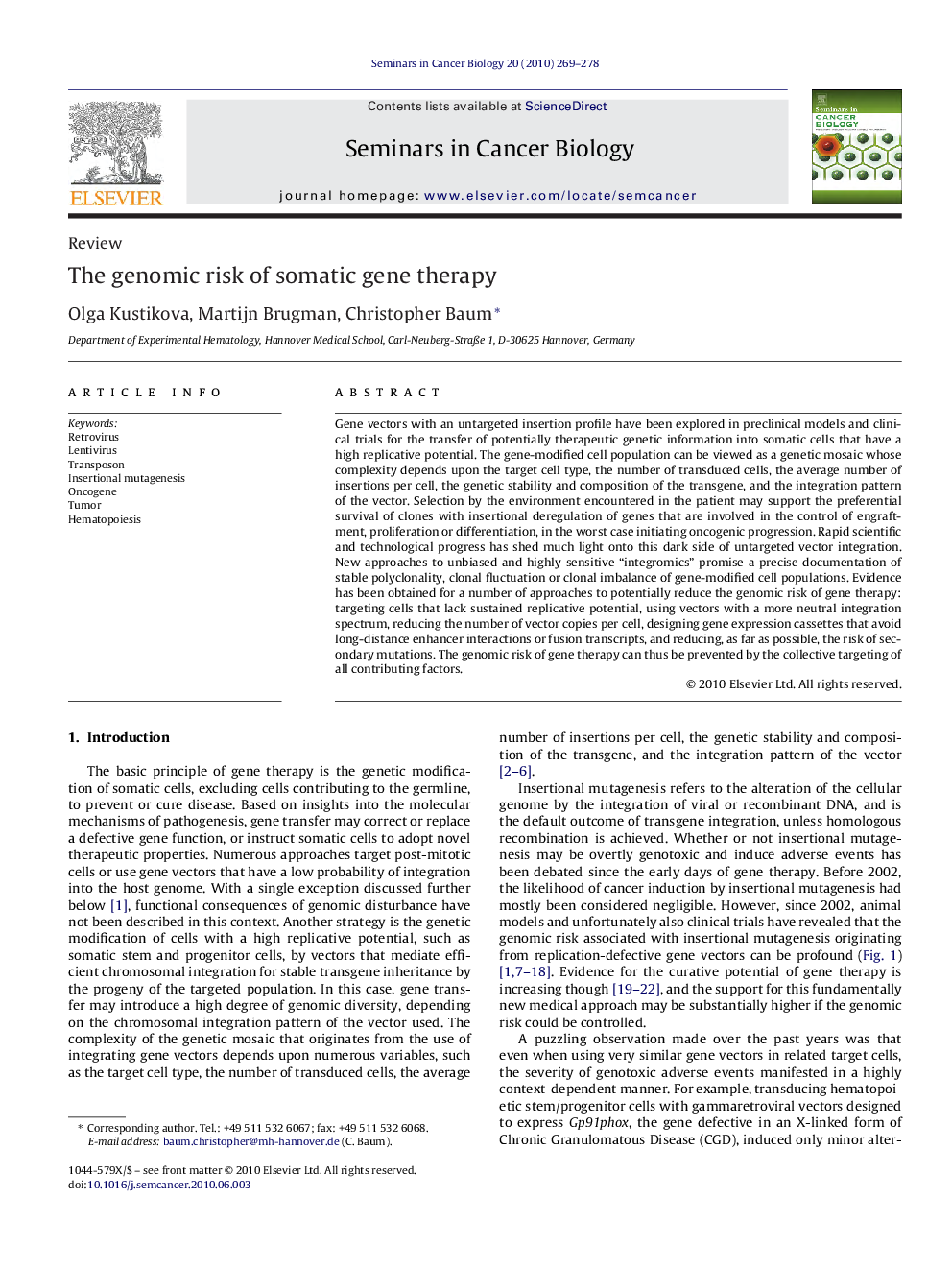| Article ID | Journal | Published Year | Pages | File Type |
|---|---|---|---|---|
| 2023971 | Seminars in Cancer Biology | 2010 | 10 Pages |
Gene vectors with an untargeted insertion profile have been explored in preclinical models and clinical trials for the transfer of potentially therapeutic genetic information into somatic cells that have a high replicative potential. The gene-modified cell population can be viewed as a genetic mosaic whose complexity depends upon the target cell type, the number of transduced cells, the average number of insertions per cell, the genetic stability and composition of the transgene, and the integration pattern of the vector. Selection by the environment encountered in the patient may support the preferential survival of clones with insertional deregulation of genes that are involved in the control of engraftment, proliferation or differentiation, in the worst case initiating oncogenic progression. Rapid scientific and technological progress has shed much light onto this dark side of untargeted vector integration. New approaches to unbiased and highly sensitive “integromics” promise a precise documentation of stable polyclonality, clonal fluctuation or clonal imbalance of gene-modified cell populations. Evidence has been obtained for a number of approaches to potentially reduce the genomic risk of gene therapy: targeting cells that lack sustained replicative potential, using vectors with a more neutral integration spectrum, reducing the number of vector copies per cell, designing gene expression cassettes that avoid long-distance enhancer interactions or fusion transcripts, and reducing, as far as possible, the risk of secondary mutations. The genomic risk of gene therapy can thus be prevented by the collective targeting of all contributing factors.
